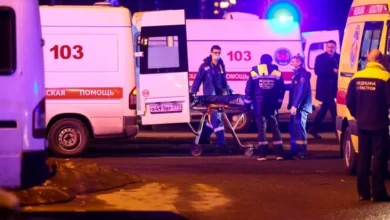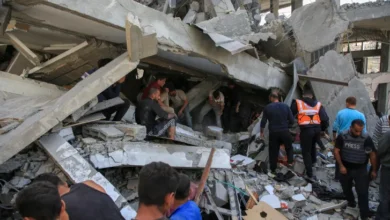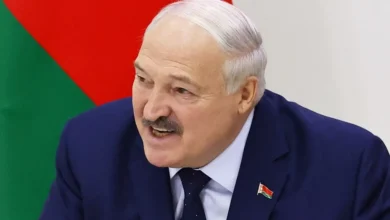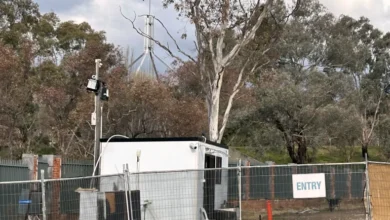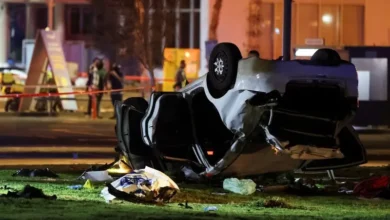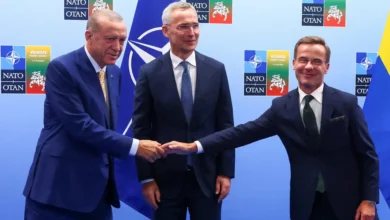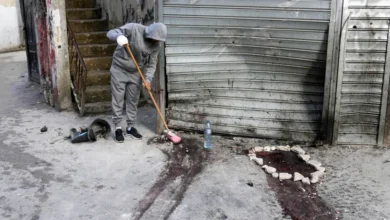‘Lift off’: Saudi astronauts – including Arab world’s first female – blast into space
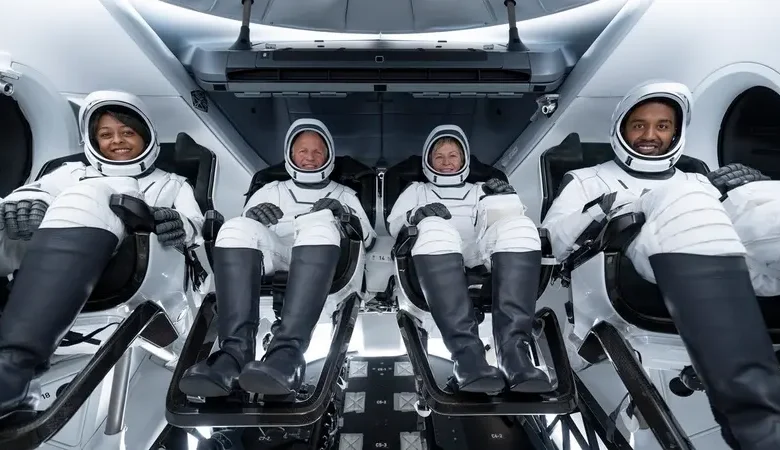
Saudi Arabia made history on Monday when it sent two of its citizens – including the first ever Arab female – to the International Space Station (ISS), marking the Kingdom’s first nationals to foray into space in almost four decades.
At 1:37 a.m. GST astronauts Rayyanah Barnawi and Ali al-Qarni blasted off from a SpaceX Falcon 9 rocket aboard a SpaceX Dragon spacecraft as part of the Axiom 2 space mission to the ISS from NASA’s Kennedy Space Center in Florida.
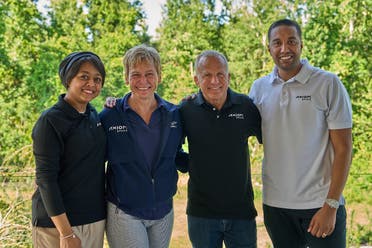
NASA began a live broadcast of the launch live on its website and social media channels at 12:30 a.m and confirmed all the astronauts had donned their spacesuits ready for launch of the Crew Dragon capsule carrying the Ax-2 crew to and from the ISS which is known as ‘Freedom’. The dragon spacecraft hatch closed for flight at about midnight UAE time. Shortly after, the weather was deemed acceptable for launch.
The “go” for propellant load was given by the launch director about 45 minutes before liftoff. The crew access arm, which was used to load the astronauts, was retracted minutes later.
At ten minutes before launch the final ‘go’ was given, with NASA saying: “Let Freedom fly.”
Right on schedule, the rocket blasted off to cheers from NASA. The astronauts are now on a 16-hour journey to ISS.
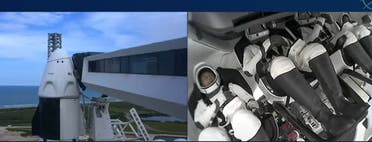
The successful blast-off marked the start of a mission that will mark Barnawi and al-Qarni as the first Saudi citizens in space in nearly 40 years, after the Kingdom sent the first Arab, Prince Sultan bin Salman, to space in 1985.
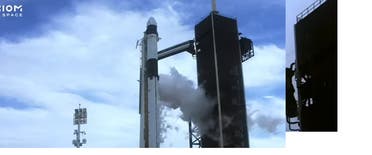
About an hour before lift-off, a spokesman for the Saudi Space Center, said the “historic” space mission was “just the start” for the Kingdom’s ambitions into space.
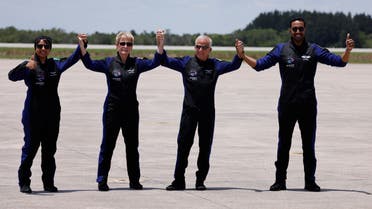
The mission will make the Kingdom the first nation not part of the official International Space Station partnership to have two astronauts aboard the ISS at the same time.
Their launch – part of a private mission, called Axiom 2 – saw Saudi astronauts join Americans Peggy Whitson, the commander of the trip, and pilot John Shoffner.
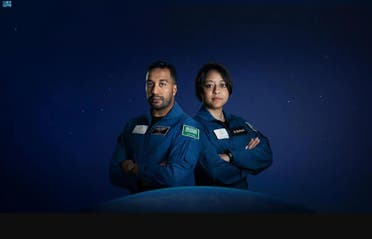
The crew are expected to land at ISIS at about 6 p.m GST Monday where they will join fellow Arab astronaut – the UAE’s Sultan al-Neyadi – currently on the ISS for a six-month mission – the Arab world’s first long duration space mission. It will mark the first time astronauts from two Arab countries have met onboard ISS.
Hours before the launch he sent a good-luck message to the two astronauts on Twitter, saying: “Following in Prince Sultan bin Salman Al Saud’s pioneering footsteps, two Saudi astronauts will launch their first mission to the ISS and for the first time ever, three Arab astronauts will be in space together.”
Once docked, the Axiom Space astronauts plan to spend about eight days aboard the orbiting laboratory implementing a full mission comprised of science, outreach, and commercial activities.
During their mission, Barnawi and al-Qarni will conduct 20 experiments, including research into predicting and preventing cancer and a study into how to generate artificial rain in future human settlements on the Moon and Mars.
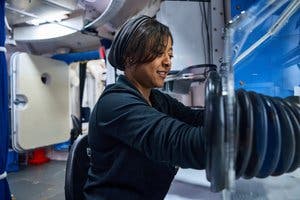
Hours before the expected blast-off, Barnawi said “she was always into exploring” and said her history book-making voyage into space is a “dream come true..”
“I was always into exploring…for me research was one of the things that fulfilled that feeling for me,” Barnawi said in a video released by Axiom Space, the Houston company that helped arrange the trip for Saudi Arabia.
“Trying to experiment, finding a piece of the puzzle that could solve a mystery…I never thought I would be going to space but at the same time it feels like a dream come true. It is an overwhelming feeling of course.”
“It honestly feels like I am representing all Saudis’ ambitions, all female and all researchers as well,” she continued.
“It’s a big honor to be able to go to space, and at the same time, do the things that you love the most. It is not just that you have a nation that is proud of you.”
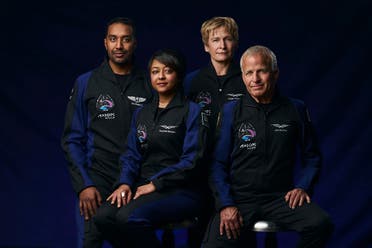
“But you are creating the dream and the opportunity for this next generation to become the next space engineers and creating the idea that the infinite is possible and that space is a true opportunity.”
Touching on where she grew up, Barnawi said home for her was a small town in Saudi Arabia.
“My dad had a little farm, he taught us how to plant, that was one of the first experiments.”
The Saudi national also said her grandmother is her “role model” and her “biggest fan.”
“I am very glad to have my grandma’s support,” she said, with a smile.
Her crew mate Peggy Whitson, also praised Barnawi in the video, saying she is an “amazing scientist.”
“We are really excited to have her on board the space station.”
Who are the Saudi astronauts?
Barnawi is an astronaut representing the Kingdom and serving as a mission specialist on the Ax-2 mission. Barnawi has a Master of Biomedical Sciences from Alfaisal University and a Bachelor of Biomedical Sciences from Otago University. She is also a research laboratory technician with nine years of experience in breast cancer and cancer stem-cell research.
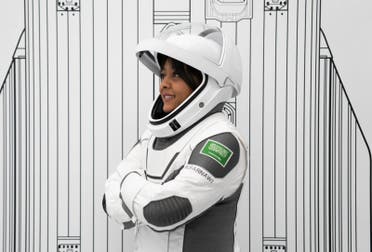
Al-Qarni is an astronaut also representing Saudi Arabia and serving as a mission specialist on the Ax-2 mission. Al-Qarni graduated with a Bachelor of Aerospace Science from King Faisal Air Academy. He is also an Air Force captain and fighter pilot. He has 12 years of experience flying fighter aircrafts and 2,387 flight hours.
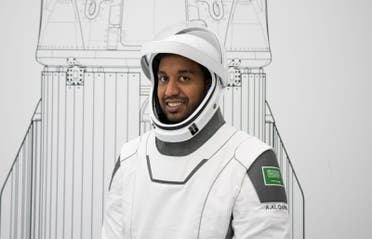
While 263 people from 20 countries have visited the ISS, Saudi Arabia will become only the sixth nation to have two national astronauts simultaneously working aboard the orbiting laboratory.
Training for space
To simulate their 12 days in space, the crew of Ax-2 participated in the Human Exploration Research Analog (HERA), a training program designed to push people to the extremes.
Ax-2 crew members spent about a week inside the HERA habitat, a unique 650-square-foot three-story structure at NASA Johnson Space Center. The habitat serves as a ground-based analog for isolation, confinement, and remote conditions in exploration scenarios.
As part of HERA, the Axiom Space Mission Integration and Operations (MI&O) team planned a space mission similar to what the crew will experience on Ax-2.
Focused on completing several key objectives, crew members worked on completing tasks on their timeliness and trained on equipment and procedures they will be using when they visit the International Space Station. The crew worked through emergency scenarios and participated in team-building exercises ahead of their historic mission.

